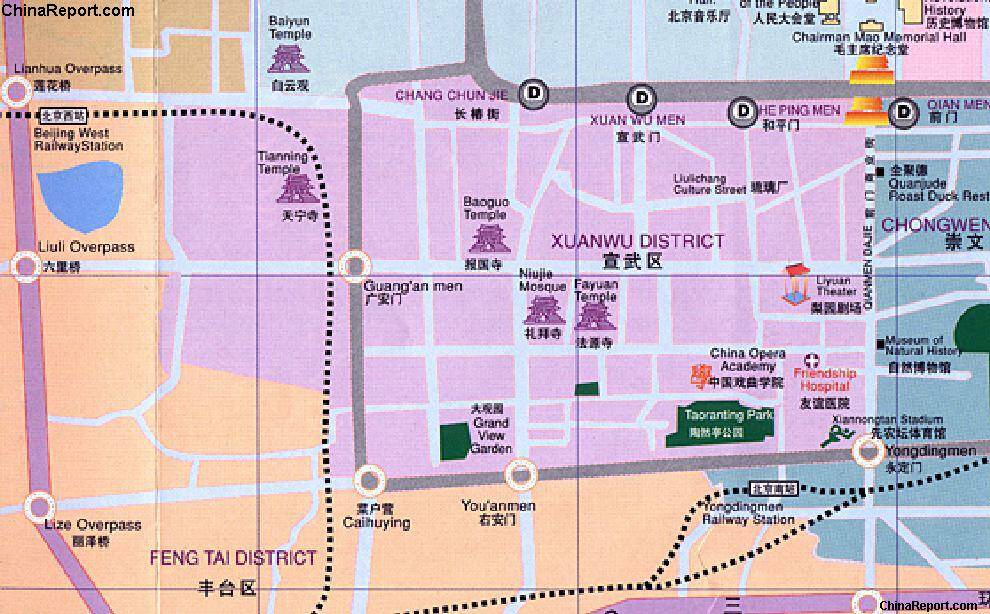The third largest district of the old city and officialy the oldest district, Xuanwu's long history dates back to the
In the North lies XuanwuMen (now demolished) and in the North-West QianMen, both former Gates and Entrances into the Imperial City (only later in history did the southern city receive it's own encircling defensive walls) forming the Northern Border of the District. Between these - Liu He Muslim Village and the two gates lie the most interesting "Hutong" Area's of Xuanwu District. Enjoy the Hutong while they last, much of the city will be refaced and modernized by the year 2010 AD
In the Eastern Part of Xuanwu District, along the cities central axis and the former main route of entry into the Walled Inner City, lies the TianQiao Area of Beijing. Tianqiao, once the meeting place and main performace area of street artist, grew into the home of Beijing Culture, and is now still home to most renowned Theaters. Others have ofcourse appeared throughout the City, but the highest podia, such as the Wansheng Acrobatics Theatre (home of the famed Beijing Acrobatic Troupe) are at Tianqiao or at least located inside the Xuanwu District.
Note that most of Xuanwu District is surrounded by the 2nd ring road of the City, which was constructed on the space left by the demolishing of the old Ming Dynasty Era City Walls. As a result of this most of Xuanwu is nearly square shaped. However due and oddity of history (there was a main camel route and a bridge leading west from Xuanwu, near Liuli overpass) the TianNing Pagoda and Temple of the West Border and nearby BaiYunGuan, Temple of the White Clouds and China Buddhist College have ended up as part of the Xuanwu District. These two, however, for all practical purposes lie outside the 2nd ring road and appear as if they were part of the Fengtai District.
